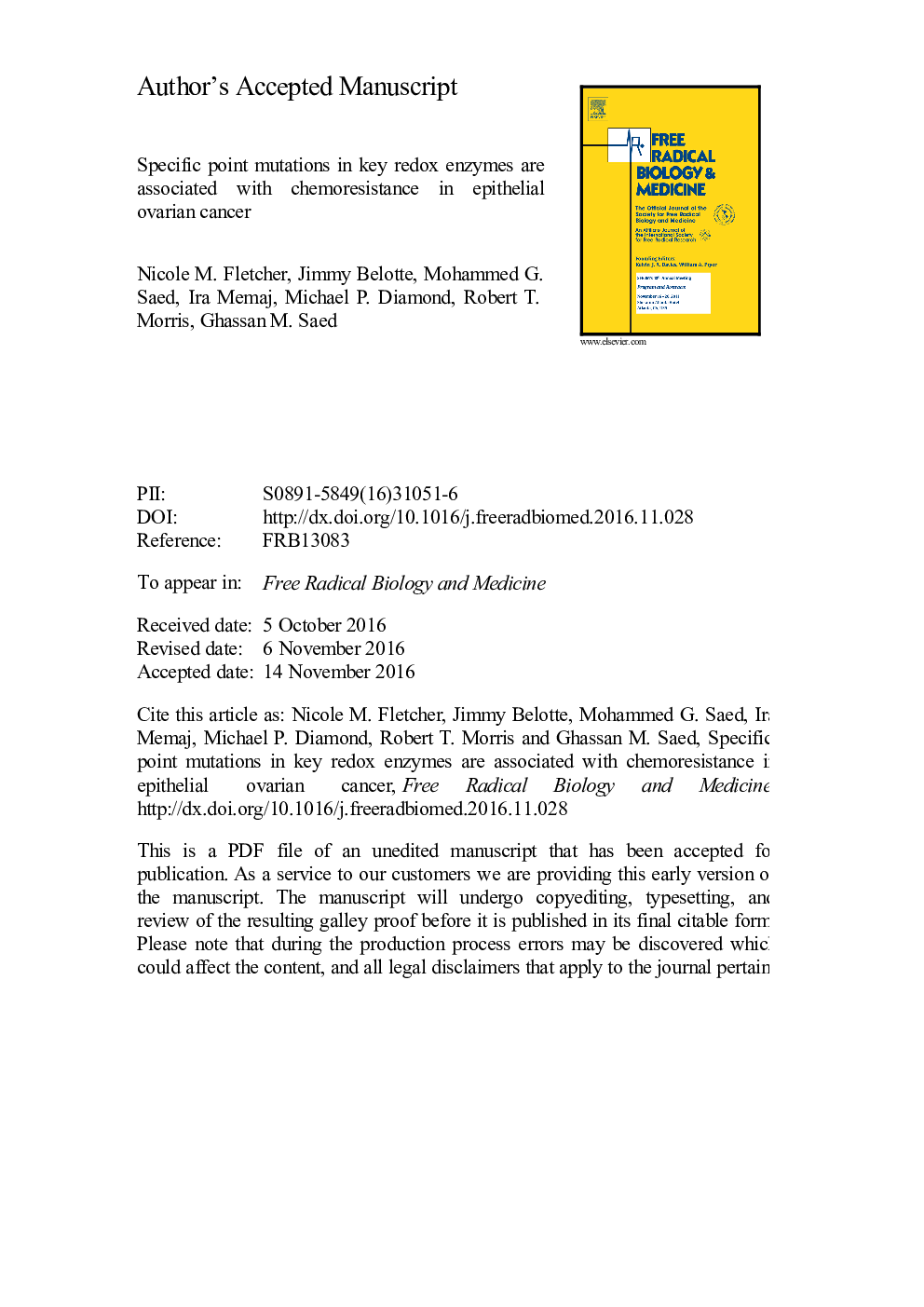| Article ID | Journal | Published Year | Pages | File Type |
|---|---|---|---|---|
| 5501995 | Free Radical Biology and Medicine | 2017 | 35 Pages |
Abstract
Oxidative stress plays an important role in the pathophysiology of ovarian cancer. Resistance to chemotherapy presents a significant challenge for ovarian cancer treatment. Specific single nucleotide polymorphisms (SNPs) in key redox enzymes have been associated with ovarian cancer survival and progression. The objective of this study was to determine whether chemotherapy induces point mutations in key redox enzymes that lead to the acquisition of chemoresistance in epithelial ovarian cancer (EOC). Human EOC cell lines and their chemoresistant counterpart were utilized for this study. Specific SNPs in key redox enzymes were analyzed by TaqMan SNP Genotyping. Activities and levels of key redox enzymes were determined by real-time RT-PCR, ELISA and a greiss assay. Point mutations in key redox enzymes were introduced into sensitive EOC cells via the CRISPR/Cas9 system. Cell viability and IC50 for cisplatin were determined by the MTT Cell Proliferation Assay. Data was analyzed with SPSS using Student's two-tailed t-tests and One-way ANOVA followed by Dunnett's or Tukey's post hoc tests, p<0.05. Here, we demonstrate that chemoresistant EOC cells are characterized by a further enhancement in oxidative stress as compared to sensitive counterparts. Additionally, chemoresistant EOC cells manifested specific point mutations, which are associated with altered enzymatic activity, in key redox enzymes that are not detected in sensitive counterparts. Supplementation of an antioxidant was able to successfully sensitize EOC cells to chemotherapeutics. Causality was established by the induction of these point mutations in sensitive EOC cells, which resulted in a significant increase in the level of chemoresistance. These findings indicate that chemotherapy induces specific point mutations in key redox enzymes that contribute to the acquisition of chemoresistance in EOC cells, highlighting a potential novel mechanism. Identification of targets for chemoresistance with either biomarker and/or screening potential will have a significant impact for the treatment of this disease.
Keywords
CSCEOCGSRATCCiNOSRT-PCRGPXGSHCATMPONAD(P)HO2•−Hydrogen peroxideOxidative stressSODOvarian cancerEpithelial ovarian cancerCancer stem cellsinducible nitric oxide synthaseSuperoxideSuperoxide dismutaseChemotherapyTRAILAmerican Type Culture CollectionmyeloperoxidaseNitric oxidenicotinamide adenine dinucleotide phosphateH2O2real-time reverse transcription polymerase chain reactionSingle nucleotide polymorphismsSingle nucleotide polymorphismSNPCatalaseGlutathioneglutathione reductaseglutathione peroxidase
Related Topics
Life Sciences
Biochemistry, Genetics and Molecular Biology
Ageing
Authors
Nicole M. Fletcher, Jimmy Belotte, Mohammed G. Saed, Ira Memaj, Michael P. Diamond, Robert T. Morris, Ghassan M. Saed,
